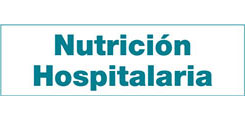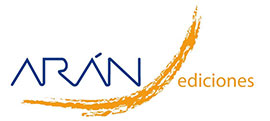Trabajo Original
A novel nomogram based on the nutritional risk screening 2002 score to predict survival in hepatocellular carcinoma treated with transarterial chemoembolization
Xinxin Chen
 Número de descargas:
12383
Número de descargas:
12383
 Número de visitas:
2905
Número de visitas:
2905
 Citas:
4
Citas:
4
Compártelo:
Objective: transarterial chemoembolization (TACE) is one of the common treatments for hepatocellular carcinoma (HCC). Predicting prognosis for HCC patients who received TACE is challenging because of huge differences in outcome. At present, the Nutritional Risk Screening 2002 (NRS-2002) is widely used to screen nutritional risk in hospitalized patients, which has been confirmed to be related to prognosis. Here, the objective of this research is to construct a prognostic nomogram using the NRS-2002 score for HCC patients receiving TACE. Methods: we enrolled 359 HCC patients who received TACE at the Xingtai People's Hospital between January 2015 and December 2020. According to the preoperative NRS-2002 score, patients were divided into an NRS ≥ 3 group (n = 190; 52.9 %) and an NRS < 3 group (n = 167, 47.1 %). Meanwhile, variables associated with survival were analyzed by univariate and multivariate Cox regression. Beyond that, a nomogram incorporating independent variables was established. The concordance index (C-index) and calibration curves were used to assess the prediction performance of the nomogram. Results: the median survival of the NRS ≥ 3 group was significantly lower than that of the NRS < 3 group. As shown by multivariate analysis, in the Barcelona Clinic Liver Cancer stage an NRS-2002 score ≥ 3, γ-glutamyl transpeptidase, and alpha-fetoprotein were significantly associated with survival in HCC patients after TACE. In addition, the C-index was 0.708 (95 % confidence interval: 0.672-0.743), and the calibration curves showed a good consistency between the observed and predicted survivals at 1, 2, and 3 years, respectively. Conclusions: NRS-2002 ≥ 3 could identify high-risk patients with HCC who received TACE. The NRS-2002-based nomogram model had good prognostic prediction accuracy. Keywords:
Palabras Clave: Hepatocellular carcinoma. Transcatheter arterial chemoembolization. Nutritional risk. Nutritional risk screening 2002.
DOI: 10.3322/caac.21262
DOI: 10.1016/j.jhep.2018.03.019
DOI: 10.1002/hep.28453
DOI: 10.1056/NEJMra1713263
DOI: 10.1016/S0140-6736(14)60121-5
DOI: 10.1016/j.currproblcancer.2020.100638
DOI: 10.1016/j.nut.2020.111072
DOI: 10.1016/j.clnu.2020.08.004
DOI: 10.1016/S0261-5614(02)00214-5
DOI: 10.1017/S0007114520002366
DOI: 10.3109/00365521.2015.1028994
DOI: 10.1051/parasite/2020071
DOI: 10.5114/aoms.2017.65273
DOI: 10.1002/jso.25281
DOI: 10.1200/JCO.2007.12.9791
DOI: 10.3389/fonc.2021.686972
DOI: 10.1200/JCO.20.02446
DOI: 10.1016/j.jhep.2020.12.012
DOI: 10.1016/j.jvir.2015.12.752
DOI: 10.1016/j.jvir.2017.04.025
DOI: 10.1016/j.clnu.2015.03.001
DOI: 10.1016/j.clnu.2017.06.017
DOI: 10.1016/j.clnu.2014.11.007
DOI: 10.1038/ejcn.2014.239
DOI: 10.1016/j.clnu.2021.02.032
DOI: 10.1007/s11684-021-0845-6
DOI: 10.1016/j.jhep.2010.06.015
DOI: 10.1111/j.1572-0241.2007.01604.x
DOI: 10.1016/j.canlet.2019.11.043
DOI: 10.1002/cam4.1511
DOI: 10.1016/j.jhep.2020.05.052
DOI: 10.7150/ijbs.28720
Artículos Relacionados:
Trabajo Original: Relación entre la escala de riesgo nutricional nutric y el hipercatabolismo proteico en pacientes críticos ventilados
Dino Moretti , Melisa D. Ré , Nicolás S. Rocchetti , Daniel Horacio Bagilet , Claudio Jesus Settecase , Martín Buncuga , Marta Quaglino
Trabajo Original: Screening of nutritional risk: assessment of predictive variables of nutritional risk in hospitalized patients in a second-level care center in Mexico
Jorge Luis Gutiérrez De Santiago , Sandra Aguilar Valdez , Myrella Leticia Casas Robles , Idalia Garza Veloz , Vicente Ortega Cisneros , Margarita de la Luz Martínez Fierro
Trabajo Original: Nutritional diagnosis of patients with hepatocellular carcinoma: what is the best method?
Daniella Miranda da Silva , Ana Cristhina Henz , Sabrina Alves Fernandes , Cláudio Augusto Marroni
Revisión: Selenium concentration, dietary intake and risk of hepatocellular carcinoma – A systematic review with meta-analysis
Yuanfeng Gong , Fengying Dong , Yan Geng , Hongkai Zhuang , Zuyi Ma , Zixuan Zhou , Bowen Huang , Zhonghai Sun , Baohua Hou
Trabajo Original: Impact of nutritional risk on 28-day mortality and the prevalence of underfeeding in critically ill patients: A prospective cohort study
Sheila Alejandra Campos León , Agustín Ramiro Urzua González , Manuel José Rivera Chávez , María de Lourdes Reyes Escogido , Jaime Rivera Morales , Rodolfo Guardado Mendoza
Trabajo Original: Body composition by bioelectrical impedance, muscle strength, and nutritional risk in oropharyngeal dysphagia patients
Aniella G. Ramos-Vázquez , Carlos A. Reyes-Torres , Lilia Castillo-Martínez , Aurora E. Serralde-Zúñiga
Trabajo Original: Detection of nutritional risk and hospital stay in the hospitalized elderly adult
Olga Lucía Pinzón-Espitia , Juan Mauricio Pardo-Oviedo , Milcíades Ibáñez-Pinilla
Trabajo Original: Cribado nutricional del paciente con patología vascular hospitalizado: relación del riesgo nutricional con los resultados clínicos y económicos en un servicio quirúrgico
Gloria María Novo Martínez , María Dolores Ballesteros Pomar , Matilde Sierra Vega , Ana Belén García Gallego
Trabajo Original: High nutritional risk using NUTRIC-Score is associated with worse outcomes in COVID-19 critically ill patients
Iván Armando Osuna-Padilla , Nadia Carolina Rodríguez-Moguel , Adriana Aguilar-Vargas , Sebastián Rodríguez-Llamazares
Trabajo Original: Exploration of three different nutritional scores in predicting postoperative complications after pancreaticoduodenectomy
Ke Cong , Gu Chunwei
Trabajo Original: Nutritional risk and clinical outcomes in critically ill adult patients with COVID-19
Andrés Luciano Nicolás Martinuzzi , William Manzanares , Eliana Quesada , María Jimena Reberendo , Fernando Baccaro , Irina Aversa , Caludia Elisabeth Kecskes , Lorena Magnífico , Victoria González , Daniela Bolzico , Nancy Baraglia , Priscila Navarrete , Ezequiel Manrique , María Fernanda Cascarón , Ailen Dietrich , Jesica Asparch , Leticia Betiana Peralta , Cayetano Galleti , María Laura Capria , Yamila Lombi , Marian Celia Rodríguez , Camila Ester Luna , Sebastián Pablo Chapela
Trabajo Original: Nutritional status and its association with in-hospital major adverse cardiac events in patients with severe heart failure: a prospective study
Mei Jiang , Mengyun Sun , Xuan Zhang , Ruijian Li
Trabajo Original: Riesgo nutricional y desenlaces clínicos en pacientes con diagnóstico de COVID-19 en una red hospitalaria de alta complejidad
Olga Lucía Pinzón-Espitia , Juan Mauricio Pardo-Oviedo , Luisa Fernanda Murcia Soriano
Trabajo Original: Assessing risk screening methods of malnutrition in geriatric patients; Mini Nutritional Assessment (MNA) versus Geriatric Nutritional Risk Index (GNRI)
Trabajo Original: Nutritional risk and status of surgical patients; the relevance of nutrition training of medical students
Trabajo Original: Association between nutritional risk based on the NRS-2002 test and hospital morbidity and mortality
Trabajo Original: Nutritional screening in clinical patients at a University Hospital in Northeastern Brazil
Trabajo Original: Study on the nutritional risk of autonomous non-institutionalized adult elder people
Trabajo Original: Factores de riesgo nutricional en pacientes con cáncer de cabeza y cuello en el Centro de Atención Oncológica del estado de Michoacán
Trabajo Original: Proceso completo de implantación de un sistema de cribado de riesgo nutricional en el hospital universitario La Paz de Madrid
Trabajo Original: Estudio de dos variantes de la puntuacion de riesgo nutricional “NUTRIC” en pacientes criticos ventilados
Trabajo Original: Efecto de la intervención nutricional temprana en el resultado clínico de pacientes en riesgo nutricional
Trabajo Original: Evaluación del riesgo nutricional de los adolescentes escolarizados en Cantabria
Revisión: Menú de textura modificada y su utilidad en pacientes con situaciones de riesgo nutricional
Revisión: Cribado nutricional; control de la desnutrición clínica con parámetros analíticos
Trabajo Original: Prevalencia de riesgo de desnutrición evaluada con NRS-2002 en población oncológica mexicana
Trabajo Original: Nutritional risk among surgery patients and associations with hospital stay and postoperative complications
Trabajo Original: Factores asociados al riesgo nutricional en adultos mayores autónomos no institucionalizados
Trabajo Original: Factores de riesgo nutricionales para dismorfia muscular en usuarios de sala de musculación
Trabajo Original: Un instrumento sencillo y fiable para detectar riesgo nutricional en pacientes hospitalizados
Trabajo Original: Riesgo de malnutrición en una población mayor de 75 años no institucionalizada con autonomía funcional
Trabajo Original: Nutritional assessment of patients with aneurysmal subarachnoid hemorrhage using the modified “Nutrition Risk in the Critically Ill" score, and its association with outcomes
Marta Rodrigues de Carvalho , Beatriz Schmidt Dal Berto , Amelia Maia Rodrigues , Lorena Ohrana Braz Prudente , Edmilson Leal Bastos de Moura
Trabajo Original: Factores pronósticos de desnutrición en pacientes con cáncer colorrectal
Erica Barreiro Domínguez , Raquel Sánchez Santos , Julio Roberto Ballinas Miranda , Ester Carrera Dacosta , Lara Pérez Corbal , Susana Diz Jueguen , Federico Mallo Ferrer
Trabajo Original: Adaptación en español y validación en México de la herramienta de tamizaje nutricional STAMP (Screening Tool for the Assessment of Malnutrition in Paediatrics)
Yahiel Osorio-Alamillo , Jimena Fuentes-Cummings , Alejandra Ruíz-Barranco , Paulina Bidart-Behar , Patricia Clark , Guillermo Meléndez-Mier , Nallely Bueno Hernández
Trabajo Original: Association between nutritional status and platelet-to-lymphocyte ratio in patients with hepatocellular carcinoma undergoing transcatheter arterial chemoembolization
Hongyan Duan , Jianfeng Zhang , Peng Wang , Jie Zhang , Jianwei Jiang
Trabajo Original: Evaluación sensorial de un suplemento nutricional oral específico para diabetes con aceite de oliva virgen extra en pacientes en riesgo nutricional y diabetes mellitus tipo 2: ensayo clínico doble ciego, aleatorizado, cruzado y multicéntrico (DIACARE
Isabel María Vegas Aguilar , Cristina Porca Fernández , Tamara Casañas Quintana , Alicia Calleja Fernández , Cristina Tejera Pérez , Francisco José Tinahones Madueño , Diego Bellido Guerrero , José Manuel García Almeida
Trabajo Original: Glycaemic and insulinaemic impact of a diabetes-specific oral nutritional supplement with extra-virgin olive oil in patients with type 2 diabetes mellitus at nutritional risk: a randomized, double-blind, crossover, multicentre clinical trial (DIACARE)
José Manuel García Almeida , Isabel María Vegas Aguilar , Alicia Calleja Fernández , Cristina Porca Fernández , Tamara Casañas Quintana , Cristina Tejera Pérez , Francisco José Tinahones Madueño , Diego Bellido Guerrero
Trabajo Original: Mini nutritional assessment-short form test: criterion and predictive validity in older adults from a long-term care unity
Ana Meneses , Cláudia Silva , Cíntia Pinho-Reis , Rita Soares Guerra
Trabajo Original: Comparación del riesgo nutricional alto por tres variantes del puntaje NUTRIC en pacientes críticos ventilados
Dino Moretti , Martín Buncuga , Nicolás S. Rocchetti , Melisa D. Ré , Silvana Gattino , Rafael Gimenez , Sebastian Radimak , Claudio Jesus Settecase , Daniel Horacio Bagilet
Trabajo Original: Symptom clusters and nutritional status in primary liver cancer patients receiving transcatheter arterial chemoembolization
Jianfeng Zhang , Hongyan Duan , Jie Zhang , Hongyan Qiao , Jianwei Jiang
Trabajo Original: Nutritional status and its relationship with COVID-19 prognosis in hemodialysis patients
Paz Andrea Bersano-Reyes , Gema Nieto Martínez , Alicia Cana-Poyatos , Paula Guerrero Sanz , Rafa García-Maset , Alicia García-Testal
Trabajo Original: Association between nutritional risk status and both diaphragmatic dysfunction and diaphragm atrophy in medical ıntensive care unit patients
Kamil Inci , Eda Macit Aydın , Gulbin Aygencel , Melda Türkoğlu
Trabajo Original: Individualized nutritional intervention improves the nutritional status of liver cancer patients after transcatheter arterial chemoembolization
Qian Sun , Huixi Yu , Tao You , Dong Zhang
Trabajo Original: Desnutrición hospitalaria en Argentina: prevalencia y predicción de riesgo nutricional en adultos hospitalizados según seis herramientas de tamizaje nutricional (Estudio AANEP-2)
Maria Luisa Deforel , Silvina Salinas , Yanina Zwenger , Romina Barritta , Marina Khoury , Mario Perman
Trabajo Original: Association between length of hospital stay before and after surgery and nutritional risk according to NRE-2017 - A secondary analysis of a cohort study
Anna Maria Chacon , Micheli da Silva Tarnowski , Julia Brito , Anderson Garcez , Mileni Vanti Beretta , Catarina Bertaso Andreatta Gottschall
Trabajo Original: Evaluación del riesgo nutricional por STAMP de acuerdo con el tipo de cardiopatía congénita en pacientes pediátricos admitidos en un hospital de referencia
José de Jesús Vargas Lares , Lisset del Carmen López Segovia , Jonathan Antonio Casillas Moreno , Juan Carlos Barrera de León
Trabajo Original: Influence of nutritional risk assessment on the prognosis of trauma patients
Fei Li , Haiyang Guan , Ying Liu
Trabajo Original: Estudio descriptivo del consumo de fármacos, la polifarmacia y el riesgo nutricional en pacientes en hemodiálisis periódica
Esmeralda Josa Martín , Guillermina Barril Cuadrado , Graciela Álvarez García , Mª del Mar Ruperto López
Artículos más populares
Revisión: Inteligencia artificial generativa ChatGPT en nutrición clínica: avances y desafíos
ChatGPT y otras herramientas de inteligencia artif...
Revisión: Suplementación con micronutrientes y sus beneficios: ¿por qué y cuándo?
Introducción: los micronutrientes participan en la...
-
Licencia creative commons: Open Access bajo la licencia Creative Commons 4.0 CC BY-NC-SA
https://creativecommons.org/licenses/by-nc-sa/4.0/legalcode




